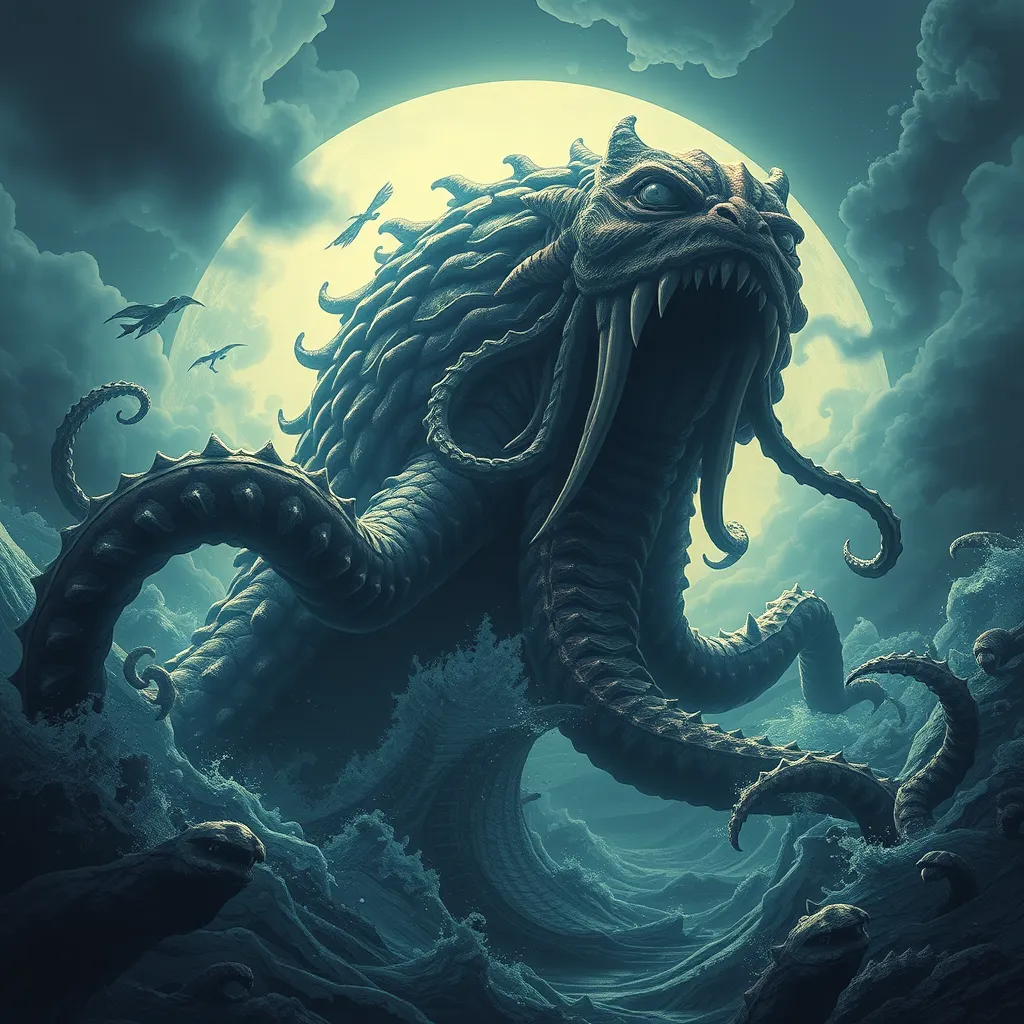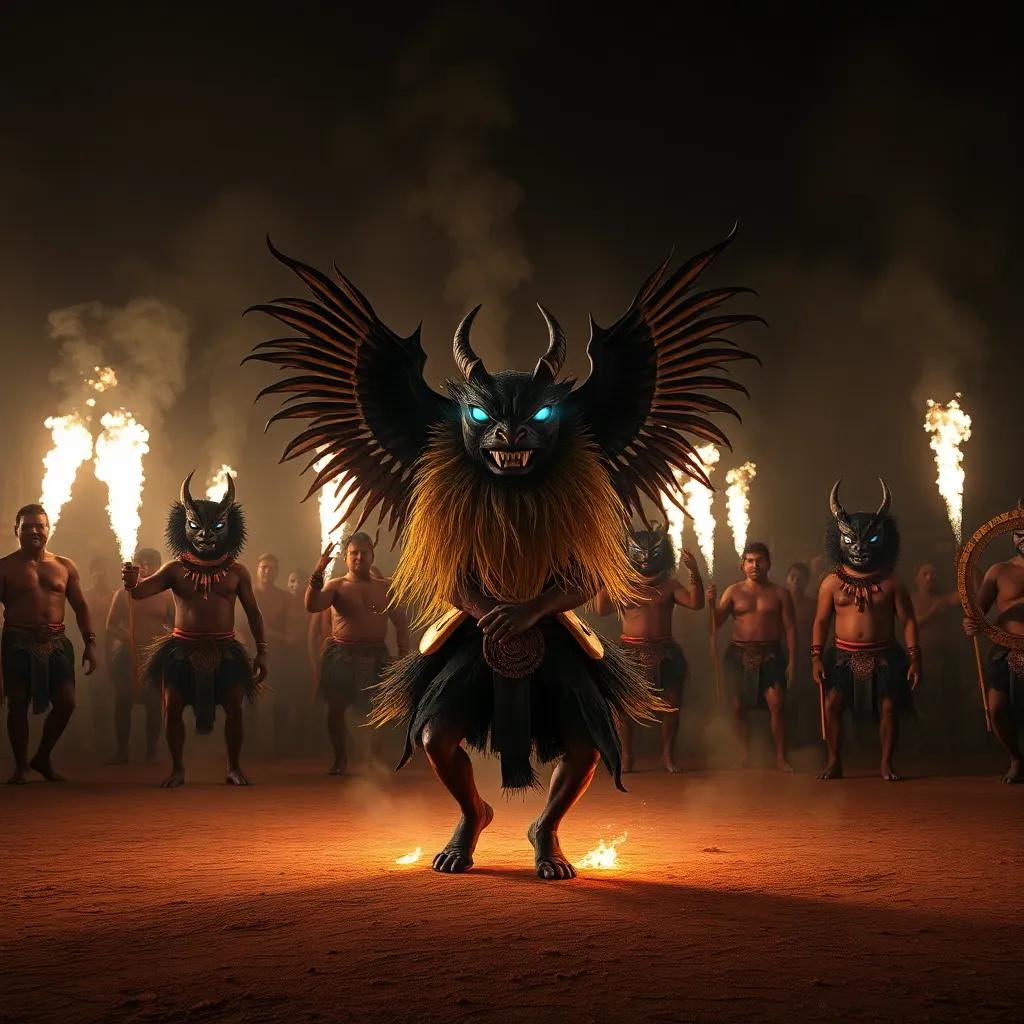The Giant of the Deep: A Japanese Legend of the Kraken
I. Introduction
The Kraken, a legendary sea monster, has captured the imagination of cultures worldwide, often depicted as a colossal creature capable of dragging entire ships beneath the waves. This myth has its roots in various maritime traditions, particularly in Scandinavian folklore. However, the interpretation of the Kraken in Japanese culture presents a unique perspective that is intertwined with local beliefs and historical context.
This article aims to explore the Japanese interpretation of the Kraken, its historical significance, notable legends, and its enduring impact on Japanese culture. By delving into these aspects, we aim to highlight the complexity of this myth and its relevance in understanding Japan’s rich maritime heritage.
II. Historical Context of Sea Monsters in Japanese Folklore
Japan, an archipelago surrounded by ocean, has a deep-rooted maritime culture that dates back thousands of years. The sea has been both a source of sustenance and a formidable force, shaping the lives of those who depend on it. As a result, sea creatures hold a significant place in Japanese mythology, often embodying the mysteries and dangers of the ocean.
In Japanese folklore, various sea monsters are mentioned, each with unique characteristics and stories. While the Kraken is not as prominent a figure as in Western traditions, its essence can be found in tales of enormous sea creatures that inspire both fear and respect.
The following points highlight the significance of sea creatures in Japanese mythology:
- Sea monsters symbolize the unknown and the uncontrollable forces of nature.
- Folklore often serves as a cautionary tale about the dangers of the sea.
- Many stories include elements of reverence for the ocean and its creatures, reflecting Shinto beliefs.
III. The Origin of the Kraken Legend in Japan
The concept of a giant sea monster in Japan can be traced back to early accounts in literature and oral traditions. Although there is no direct mention of the Kraken in ancient Japanese texts, similar creatures can be found in various stories.
Shinto beliefs, which emphasize the worship of nature and its elements, have also played a crucial role in shaping the perception of sea monsters. The idea of kami, or spirits, residing in the ocean further enriches the narrative surrounding these mythical beings.
Some scholars suggest that the Kraken legend in Japan may have been influenced by actual marine life, such as the giant squid or other large cephalopods. Observations of unusual sea phenomena, such as whirlpools and massive waves, could have contributed to the creation of the Kraken myth.
IV. Notable Stories and Legends Featuring the Kraken
Japanese folklore is rich with tales of sea monsters that bear similarities to the Kraken. One prominent legend features a creature known as the “Umibōzu,” described as a giant, shadowy figure that rises from the depths to capsize ships. This creature embodies the unpredictable nature of the sea and serves as a warning to sailors.
Another tale involves the “Funayūrei,” spirits of those who died at sea, which often take on monstrous forms. These stories reflect the deep-seated fears and respect that sailors have for the ocean.
The symbolism behind these stories often revolves around:
- The fragility of human life in the face of nature’s power.
- The importance of respecting the sea and its inhabitants.
- The connection between life, death, and the unknown.
Regional variations of these legends can also be found, showcasing local interpretations of sea monsters and their significance to different coastal communities in Japan.
V. The Kraken’s Representation in Art and Literature
The Kraken has been depicted in various forms of art throughout history, and Japan is no exception. Traditional Japanese art often features sea monsters in woodblock prints and paintings, where they are portrayed as awe-inspiring yet terrifying beings. These depictions serve to illustrate the duality of the ocean as both a provider and a predator.
In modern literature and popular culture, the Kraken has found new life in stories that blend traditional folklore with contemporary themes. Notable works include:
- Novels that incorporate mythological elements into modern narratives.
- Films and anime that depict sea monsters as central characters.
- Video games that draw inspiration from Japanese mythology, including references to the Kraken.
The influence of these representations continues to shape the way the Kraken is perceived in contemporary Japanese storytelling.
VI. The Kraken and Its Impact on Japanese Maritime Culture
The Kraken, or its equivalents in Japanese mythology, has played a significant role in sailor lore and superstitions. Sailors often shared tales of monstrous creatures to explain the dangers they encountered at sea, creating a rich tapestry of folklore that served both to entertain and to warn.
These legends have influenced navigation and fishing practices, as many sailors believed that certain rituals could appease these sea monsters and ensure safe passage. The Kraken also serves as a cautionary tale, reminding sailors of the ocean’s unpredictability and the need for respect and caution.
VII. The Fusion of Myth and Science: Real-life Inspirations
The fascination with the Kraken has not only persisted in folklore but has also found roots in the real world. Potential marine creatures that resemble the Kraken include:
- The giant squid, which can grow to impressive lengths and has been known to attack ships.
- Oarfish, long and serpentine fish that could inspire tales of sea monsters.
- Other large cephalopods that inhabit the deep sea.
Scientific explorations of the deep sea have revealed astonishing creatures that challenge our understanding of marine life, further fueling the mythology surrounding sea monsters. This intersection of myth and reality continues to intrigue scientists and enthusiasts alike.
VIII. Conclusion
The Kraken, while not as explicitly defined in Japanese culture as in Western traditions, embodies the mysteries of the ocean and the relationship humans have with it. Through various legends, art forms, and cultural practices, the significance of the Kraken and similar sea monsters in Japan is evident.
As we explore these narratives, it becomes clear that the legend of the Kraken endures, evolving alongside modern interpretations and societal changes. This ongoing fascination reflects humanity’s quest to understand the ocean’s depths and the mysteries it harbors, bridging the gap between myth and reality.
Ultimately, the Kraken serves as a reminder of the ocean’s power and the stories that shape our understanding of the world around us.




